Sajad Rezaie
Device-Agnostic Millimeter Wave Beam Selection using Machine Learning
Nov 22, 2022Abstract:Most research in the area of machine learning-based user beam selection considers a structure where the model proposes appropriate user beams. However, this design requires a specific model for each user-device beam codebook, where a model learned for a device with a particular codebook can not be reused for another device with a different codebook. Moreover, this design requires training and test samples for each antenna placement configuration/codebook. This paper proposes a device-agnostic beam selection framework that leverages context information to propose appropriate user beams using a generic model and a post processing unit. The generic neural network predicts the potential angles of arrival, and the post processing unit maps these directions to beams based on the specific device's codebook. The proposed beam selection framework works well for user devices with antenna configuration/codebook unseen in the training dataset. Also, the proposed generic network has the option to be trained with a dataset mixed of samples with different antenna configurations/codebooks, which significantly eases the burden of effective model training.
Location- and Orientation-aware Millimeter Wave Beam Selection for Multi-Panel Antenna Devices
Mar 22, 2022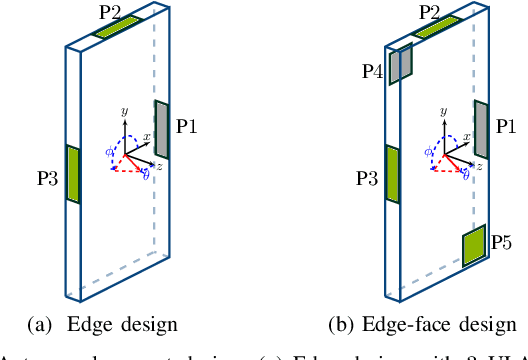
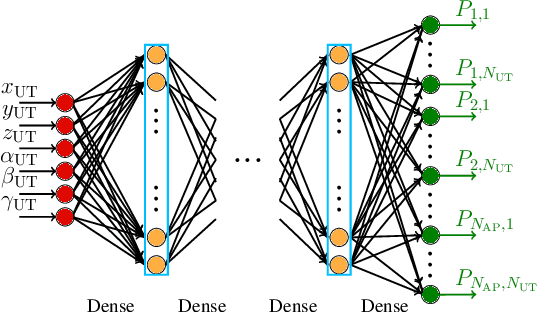
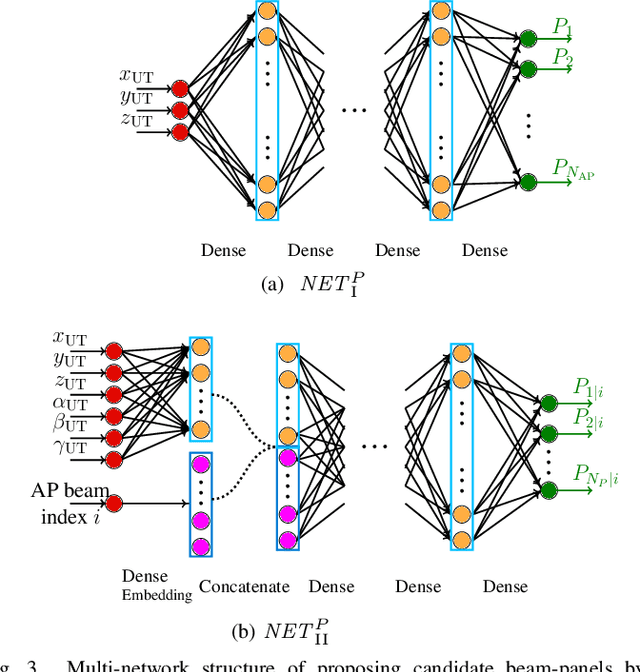
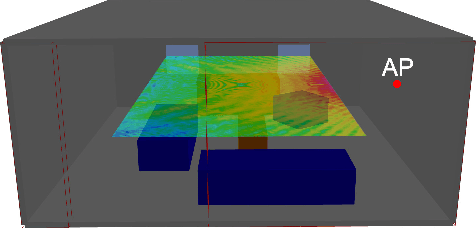
Abstract:While initial beam alignment (BA) in millimeter-wave networks has been thoroughly investigated, most research assumes a simplified terminal model based on uniform linear/planar arrays with isotropic antennas. Devices with non-isotropic antenna elements need multiple panels to provide good spherical coverage, and exhaustive search over all beams of all the panels leads to unacceptable overhead. This paper proposes a location- and orientation-aware solution that manages the initial BA for multi-panel devices. We present three different neural network structures that provide efficient BA with a wide range of training dataset sizes, complexity, and feedback message sizes. Our proposed methods outperform the generalized inverse fingerprinting and hierarchical panel-beam selection methods for two considered edge and edge-face antenna placement designs.
A Deep Learning Approach to Location- and Orientation-aided 3D Beam Selection for mmWave Communications
Oct 13, 2021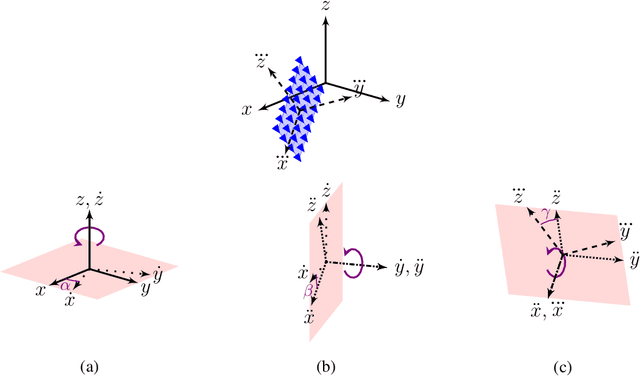

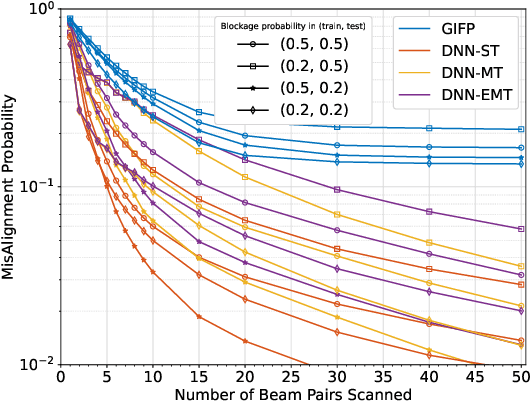

Abstract:Position-aided beam selection methods have been shown to be an effective approach to achieve high beamforming gain while limiting the overhead and latency of initial access in millimeter wave (mmWave) communications. Most research in the area, however, has focused on vehicular applications, where the orientation of the user terminal (UT) is mostly fixed at each position of the environment. This paper proposes a location- and orientation-based beam selection method to enable context information (CI)-based beam alignment in applications where the UT can take arbitrary orientation at each location. We propose three different network structures, with different amounts of trainable parameters that can be used with different training dataset sizes. A professional 3-dimensional ray tracing tool is used to generate datasets for an IEEE standard indoor scenario. Numerical results show the proposed networks outperform a CI-aided benchmark such as the generalized inverse fingerprinting (GIFP) method as well as hierarchical beam search as a non-CI-based approach. Moreover, compared to the GIFP method, the proposed deep learning-based beam selection shows higher robustness to different line-of-sight blockage probability in the training and test datasets and lower sensitivity to inaccuracies in the position and orientation information.
 Add to Chrome
Add to Chrome Add to Firefox
Add to Firefox Add to Edge
Add to Edge